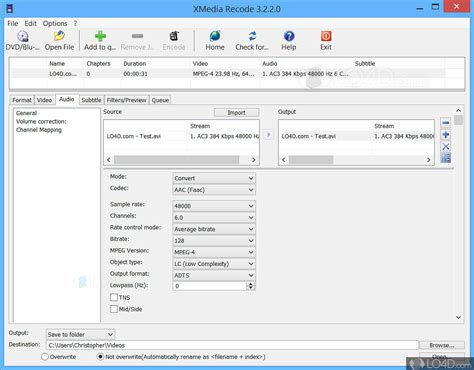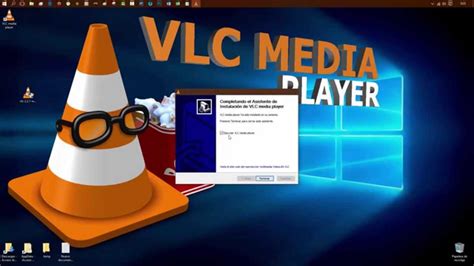Isms recovery
Author: t | 2025-04-23

Download iSMS Recovery latest version for Windows free to try. iSMS Recovery latest update: J Download iSMS Recovery latest version for Windows free to try. iSMS Recovery latest update: J

iSMS Recovery Download - iSMSRecovery_1_4_0_5_Trail.zip
We're excited to announce the release of our comprehensive ISO 27001:2022 Implementation Tool Kit. This toolkit brings you up to date with the latest enhancements in the ISO 27001 standard and a step-by-step guide to help you efficiently and effectively implement the latest clauses and new controls introduced in 2022. ISMS Policies1.Acceptable Use Policy2.Access Control Policy3.Asset Management Policy4.Business Continuity Plan5.BYOD Policy6.BYOD User Acknowledgement And Agreement7.Clean Desk Standard Policy8.Cloud Computing Policy9.Cryptographic Controls Policy10.Data Backup And Recovery Policy11.Data Transfer Agreement12.Disaster And Recovery Plan13.Disposal And Destruction Policy14.Document and Record Control Procedure15.Information Asset Register16.Information Classification Policy17.Information Security Policy18.Information Security Risk Register19.Information Transfer Policy20.ISMS Policy21.IT Asset Register22.Mobile And Devices Teleworking Policy23.Monitoring And Logging Policy24.Monitoring And Measuring Policy25.Networks Security Design26.Password Policy27.Patch Management And System Updates Policy28.Physical Protection Policy29.Roles and Responsibilities in ISMS30.Secure Development Policy31.Secure System Architecture and Engineering Principles32.Security Roadmap33.Server Patch Management Checklist34.Communication Procedure35.Statement of ApplicabilityInternal Audit36.Annual Internal Audit Program37.Audit Calendar38.Audit Non Conformity Report39.Corrective Action Procedure40.Internal Audit Checklist Excel41.Internal Audit Dashboard42.Internal Audit Plan43.Internal Audit Procedure44.Internal Audit Status Report45.Internal Audit ReportRisk Management46.RASCI Matrix47.Risk Treatment Plan48.Risk Management ProcedureIncident Management49.Incident Log50.Incident Management Procedure51.Incident Report52.Security Incident Management Process53.Vulnerability Management Process Flow Chart54.Vulnerability Management Tracking SpreadsheetManagement Review55.Management Review Agenda56.Management Review Minutes of MeetingChange Management57.Change Control Form58.Change Management Policy59.Change Management Process Checklist60.Change Request Form61.Change Request LogImplementation and Planning62.Excel Implementation Plan63.Project Plan (27001)64.Transition Pack Download iSMS Recovery latest version for Windows free to try. iSMS Recovery latest update: J Download iSMS Recovery latest version for Windows free to try. iSMS Recovery latest update: J Are appropriate to (i) the size, scope and type of Ping Identity’s business; (ii) the amount of resources available to Ping Identity; (iii) the type of information that Ping Identity will store and process; and (iv) the need for security and protection from unauthorized disclosure of such Customer Data. The ISMS is documented and updated based on changes in legal and regulatory requirements related to privacy and data security practices and industry standards applicable to the Service and reviewed at least annually. Ping Identity’s ISMS is designed to: (a) Protect the integrity, availability, and confidentiality, of Customer data in Ping Identity’s possession or control; (b) Protect against reasonably anticipated threats or hazards to the integrity, availability, and prevention of unauthorized disclosure of Customer Data by Ping Identity or its agents; (c) Protect against unauthorized access, use, alteration, or destruction of Customer Data; (d) Protect against accidental loss or destruction of, or damage to, Customer Data; and (e) Safeguard information as set forth in any local, state or federal regulations by which Ping Identity may be regulated. 2.3. Security Standards. Ping Identity’s ISMS includes adherence to and regular testing by internal and independent external audit of the key controls, systems and procedures of its ISMS to validate that they are properly implemented and effective in addressing the threats and risks identified. Ping Identity engages an independent third party to conduct annual security testing of its controls. Ping Identity will maintain SOC 2 and ISO 27001 certifications or their equivalents during theComments
We're excited to announce the release of our comprehensive ISO 27001:2022 Implementation Tool Kit. This toolkit brings you up to date with the latest enhancements in the ISO 27001 standard and a step-by-step guide to help you efficiently and effectively implement the latest clauses and new controls introduced in 2022. ISMS Policies1.Acceptable Use Policy2.Access Control Policy3.Asset Management Policy4.Business Continuity Plan5.BYOD Policy6.BYOD User Acknowledgement And Agreement7.Clean Desk Standard Policy8.Cloud Computing Policy9.Cryptographic Controls Policy10.Data Backup And Recovery Policy11.Data Transfer Agreement12.Disaster And Recovery Plan13.Disposal And Destruction Policy14.Document and Record Control Procedure15.Information Asset Register16.Information Classification Policy17.Information Security Policy18.Information Security Risk Register19.Information Transfer Policy20.ISMS Policy21.IT Asset Register22.Mobile And Devices Teleworking Policy23.Monitoring And Logging Policy24.Monitoring And Measuring Policy25.Networks Security Design26.Password Policy27.Patch Management And System Updates Policy28.Physical Protection Policy29.Roles and Responsibilities in ISMS30.Secure Development Policy31.Secure System Architecture and Engineering Principles32.Security Roadmap33.Server Patch Management Checklist34.Communication Procedure35.Statement of ApplicabilityInternal Audit36.Annual Internal Audit Program37.Audit Calendar38.Audit Non Conformity Report39.Corrective Action Procedure40.Internal Audit Checklist Excel41.Internal Audit Dashboard42.Internal Audit Plan43.Internal Audit Procedure44.Internal Audit Status Report45.Internal Audit ReportRisk Management46.RASCI Matrix47.Risk Treatment Plan48.Risk Management ProcedureIncident Management49.Incident Log50.Incident Management Procedure51.Incident Report52.Security Incident Management Process53.Vulnerability Management Process Flow Chart54.Vulnerability Management Tracking SpreadsheetManagement Review55.Management Review Agenda56.Management Review Minutes of MeetingChange Management57.Change Control Form58.Change Management Policy59.Change Management Process Checklist60.Change Request Form61.Change Request LogImplementation and Planning62.Excel Implementation Plan63.Project Plan (27001)64.Transition Pack
2025-04-23Are appropriate to (i) the size, scope and type of Ping Identity’s business; (ii) the amount of resources available to Ping Identity; (iii) the type of information that Ping Identity will store and process; and (iv) the need for security and protection from unauthorized disclosure of such Customer Data. The ISMS is documented and updated based on changes in legal and regulatory requirements related to privacy and data security practices and industry standards applicable to the Service and reviewed at least annually. Ping Identity’s ISMS is designed to: (a) Protect the integrity, availability, and confidentiality, of Customer data in Ping Identity’s possession or control; (b) Protect against reasonably anticipated threats or hazards to the integrity, availability, and prevention of unauthorized disclosure of Customer Data by Ping Identity or its agents; (c) Protect against unauthorized access, use, alteration, or destruction of Customer Data; (d) Protect against accidental loss or destruction of, or damage to, Customer Data; and (e) Safeguard information as set forth in any local, state or federal regulations by which Ping Identity may be regulated. 2.3. Security Standards. Ping Identity’s ISMS includes adherence to and regular testing by internal and independent external audit of the key controls, systems and procedures of its ISMS to validate that they are properly implemented and effective in addressing the threats and risks identified. Ping Identity engages an independent third party to conduct annual security testing of its controls. Ping Identity will maintain SOC 2 and ISO 27001 certifications or their equivalents during the
2025-04-15System)? An Information Security Management System (ISMS) is a comprehensive set of documents, which includes policies, processes, procedures, and controls, designed to facilitate effective risk management. When developing your ISMS, it is crucial to ensure that the controls, policies, and procedures you implement address the following key information security objectives: Confidentiality: Guaranteeing that data is accessible only to authorized individuals. Integrity: Ensuring that data remains complete and accurate at all times. Availability: Ensuring that data is readily accessible to authorized individuals when needed. ISO/IEC 27001 is structured into 10 sections (referred to as “clauses” in ISO/IEC 27001 terminology) and one annex. The first three clauses provide an introductory overview of the process, while clauses 4 to 10 offer more strategic guidance for securing the business as a whole. Each clause provides a set of guidelines designed to enhance your organization’s security posture. Besides these clauses, ISO/IEC 27001 also includes a single annex, known as Annex A. This annex consists… Identify the appropriate software solution for your ISO/IEC 27001 compliance needs. Evaluate software capabilities, covered requirements, compliance impact, and determine the level of evidence the software provides. ISO/IEC 27001 is an internationally acknowledged standard, belonging to the ISO/IEC 27000 series, that outlines the requirements for managing an organization’s information security program through a well-defined ISMS. NERC CIP1. What is NERC CIP? NERC CIP, which stands for North American Electric Reliability Corporation Critical Infrastructure Protection, is a collection of cybersecurity standards devised to safeguard the vital infrastructure of the North American electric grid. The objective of NERC CIP standards is to guarantee the reliability, security, and resilience of the electric power system by setting requirements for the identification and protection of critical assets and confidential information. Below is a summary of the NERC CIP framework: CIP-002: Critical Cyber Assets Identification: This requirement
2025-03-24Term of the Agreement. 2.4. Policies and Standards. Ping Identity maintains policies or standards addressing the following areas which include but are not limited to: risk management, information security, acceptable use, access control, software development lifecycle, change control, vulnerability management, data classification, encryption, data retention, incident response, backup and recovery, and business continuity. 2.5. Risk Management. Ping Identity maintains a documented risk management program that includes a risk assessment at least annually approved by senior management. 2.6. Assigned Security Responsibility. Ping Identity assigns responsibility for the development, implementation, and maintenance of its ISMS, including: (a) Designating a security executive with overall responsibility; and (b) Defining security roles and responsibilities for individuals with security responsibilities within Ping Identity. 3. Relationship with Sub-processors. Ping Identity conducts reasonable due diligence and security assessments of sub-processors engaged by Ping Identity in the storing and/or processing of Customer Data (“Sub- processors”) and enters into agreements with Sub-processors that contain provisions similar or more stringent than those provided for in this security documentation. 4. Disciplinary Policy and Process. Ping Identity maintains a disciplinary policy and process in the event Ping Identity personnel violate security policies. 5. Access Controls. 5.1 Access Control Policies and Procedures. Ping Identity has policies, procedures, and logical controls that are designed: (a) To limit access to its information systems and the facility or facilities in which they are housed to properly authorized persons; (b) To prevent personnel and others who should not have access from obtaining access; and (c) To remove access
2025-04-17